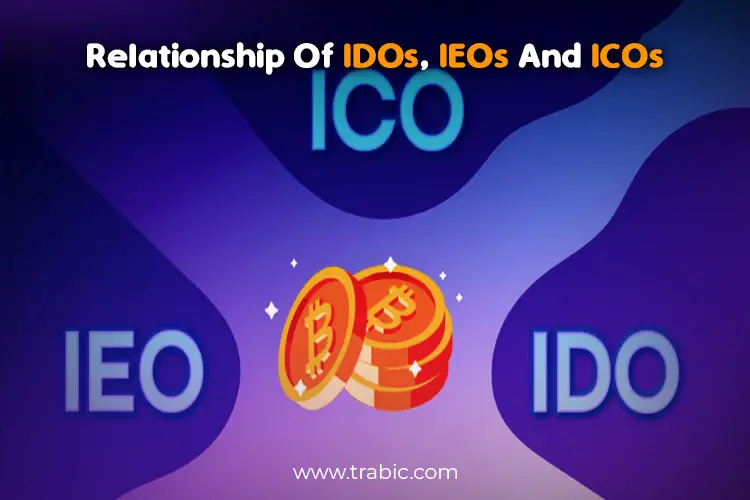From Icos To Ieos And Idos: Funding The Future Of New Cryptocurrencies

The cryptocurrency market is constantly evolving, with new projects and platforms emerging all the time. One of the most significant developments in recent years has been the rise of initial coin offerings (ICOs), initial exchange offerings (IEOs), and initial decentralized exchange offerings (IDOs). These funding mechanisms have allowed startups to raise millions of dollars to develop their projects and bring them to market.

ICOs were the first type of token sale to gain widespread adoption. In an ICO, a project team sells a new cryptocurrency to investors in exchange for Bitcoin (BTC) or Ethereum (ETH). The funds raised are used to develop the project and bring it to market. ICOs were very popular in 2024, but their popularity has since declined due to concerns about fraud and scams.

IEOs are a newer type of token sale that has become increasingly popular in recent months. In an IEO, a new cryptocurrency is sold to investors through an exchange. The exchange acts as a middleman between the project team and investors, and it takes responsibility for KYC/AML checks and other regulatory requirements. This makes IEOs a much safer and more regulated way to invest in new cryptocurrencies.
IDOs are the latest type of token sale to emerge. In an IDO, a new cryptocurrency is sold to investors through a decentralized exchange (DEX). DEXs are peer-to-peer exchanges that allow users to trade cryptocurrencies without the need for a middleman. This makes IDOs more accessible to investors and gives project teams more control over the sale process.
ICOs, IEOs, and IDOs have all played a significant role in the development of the cryptocurrency market. These funding mechanisms have allowed startups to raise millions of dollars to develop their projects and bring them to market. As the cryptocurrency market continues to evolve, it is likely that new funding mechanisms will emerge to meet the needs of investors and project teams.From Icos To Ieos And Idos: Funding The Future Of New Cryptocurrencies
Executive Summary
With the rise of blockchain technology, new and innovative ways of raising capital for new cryptocurrency projects are emerging. This article explores the evolution of cryptocurrency funding methods, from initial coin offerings (ICOs) to initial exchange offerings (IEOs) and initial decentralized offerings (IDOs).
Introduction
The cryptocurrency industry has experienced phenomenal growth in recent years, with the total market capitalization of all cryptocurrencies surpassing $2 trillion. This growth has been fueled by the development of new blockchain technologies and the emergence of decentralized applications. As the industry continues to evolve, new methods of raising capital for new cryptocurrency projects are emerging.
FAQs
Q: What is an ICO?
A: An ICO is a crowdfunding method in which a new cryptocurrency project sells its tokens in exchange for major cryptocurrencies such as Bitcoin or Ethereum.
Q: What is an IEO?
A: An IEO is a variation of an ICO in which the sale of tokens is conducted through a centralized cryptocurrency exchange.
Q: What is an IDO?
A: An IDO is a decentralized fundraising mechanism that allows new cryptocurrency projects to raise capital through decentralized exchanges or launchpads.
Subtopics
Seed Funding
Seed funding is a crucial early stage in the development of a new blockchain project. It involves seeking funding from family, friends, angel investors or seed investors to support the project’s basic research and development.
- Equity: Early investors receive an equity stake in the project.
- Convertible notes: Investors receive notes that can be converted into equity at a later date.
- Tokenized securities: Seed investors receive a token that represents their ownership in the project.
- Venture capital: Seed funding can also be obtained from traditional venture capital firms.
Initial Coin Offering (ICO)
ICOs were the first major fundraising method for cryptocurrency projects. In an ICO, a project issues and sells a new cryptocurrency token to investors in exchange for major cryptocurrencies like Bitcoin or Ethereum.
- Flexibility: ICOs offer a flexible fundraising mechanism that allows projects to raise capital without the need for traditional financial intermediaries.
- Transparency: ICOs are recorded on the blockchain, providing transparency and immutability.
- High risk: ICOs are often considered high-risk investments due to the lack of regulation and the potential for fraud.
- Volatility: ICOs can be subject to significant price volatility due to their speculative nature.
Initial Exchange Offering (IEO)
IEOs address some of the challenges associated with ICOs by partnering with a centralized cryptocurrency exchange to facilitate the sale of tokens.
- Centralized oversight: Exchanges conduct due diligence on projects, providing investors with a level of assurance.
- Market access: IEOs give projects access to a large and established investor base.
- Fees: Exchanges typically charge fees for their services and listing projects on their platforms.
- Limited decentralization: IEOs are less decentralized than ICOs as they rely on a centralized exchange.
Initial Decentralized Offering (IDO)
IDOs offer a decentralized alternative to ICOs and IEOs by allowing projects to raise capital through decentralized exchanges (DEXs) or launchpads.
- Decentralization: IDOs are more decentralized than ICOs and IEOs as they do not rely on a centralized intermediary.
- Transparency: IDOs also provide transparency and immutability by being recorded on the blockchain.
- High liquidity: DEXs have become more popular for trading cryptocurrencies, providing high liquidity for IDO tokens.
- Increased accessibility: IDOs make it easier for smaller and lesser-known projects to raise capital from a global investor base.
Other Emerging Fundraising Models
- Security Token Offerings (STOs): STOs offer a regulated pathway for raising capital by selling tokens backed by real-world assets.
- Permissionless Security Token Offerings: These offerings allow projects to issue tokens without the need for regulatory approval but adhere to specific self-regulation principles.
- Regulation Crowdfunding: This method allows small businesses and startups seeking funding to offer their equity or debt to a broad pool of investors.
Conclusion
The evolution of cryptocurrency funding methods has introduced new opportunities and challenges for entrepreneurs and investors alike. From seed funding to ICOs, IEOs, IDOs, and other emerging models, each approach offers its own unique set of characteristics. As the cryptocurrency industry continues to grow and mature, it is likely that new and innovative funding mechanisms will emerge, further shaping the future of digital finance.
Keyword Tags
- Cryptocurrency Fundraising
- ICO
- IEO
- IDO
- Blockchain
